Author: Cade Jobe
Exposure of beer to oxygen during the packaging process is known to lead to more rapid staling and thus reduced shelf-life, hence the reason brewers employ methods to reduce this risk. Using carbon dioxide (CO2) to push the beer out of the fermenter and into a keg that’s been purged of oxygen is one common approach, though certain situations make this less possible. For example, pressurizing a glass carboy can produce a messy and potentially painful outcome.
I recently observed a beer being racked from a barrel to a keg, and seeing as the former could not be pressurized, a CO2 line was placed in the bunghole and the gas was allowed to flow continuously at low pressure while the beer was being transferred. The thinking here is that the CO2, which is about 1.5 times heavier than air, would consistently push out the air, thus reducing exposure to oxygen during transfer.
In the time I’ve been kegging my beer, I’ve ranged from making no attempt to reduce cold-side oxidation to pressure transferring into purged kegs, but I’ve never continuously purged the fermenter and keg with CO2 while transferring. Understanding that gases readily mix, I was curious as to the effectiveness of this method and designed an xBmt to test it out for myself.
| PURPOSE |
To evaluate the differences between a beer that had CO2 continuously pushed into both the fermenter and keg during packaging and one that was not continuously purged.
| METHODS |
I went with an IPA for this xBmt due to how sensitive to cold-side oxidation many claim hoppy beers are.
Southern Drawl
Recipe Details
| Batch Size | Boil Time | IBU | SRM | Est. OG | Est. FG | ABV |
|---|---|---|---|---|---|---|
| 5.5 gal | 60 min | 17.3 IBUs | 3.8 SRM | 1.058 | 1.012 | 6.1 % |
| Actuals | 1.058 | 1.004 | 7.1 % | |||
Fermentables
| Name | Amount | % |
|---|---|---|
| Pale Malt, 2 row (Gambrinus) | 8.5 lbs | 63.55 |
| Oats, Flaked | 2.5 lbs | 18.69 |
| Wheat Malt, Pale (Weyermann) | 2.375 lbs | 17.76 |
Hops
| Name | Amount | Time | Use | Form | Alpha % |
|---|---|---|---|---|---|
| Hallertau Magnum | 7 g | 60 min | Boil | Pellet | 11.1 |
| Centennial | 7 g | 5 min | Boil | Pellet | 10 |
| Citra | 7 g | 5 min | Boil | Pellet | 12 |
| Loral | 7 g | 5 min | Boil | Pellet | 11.5 |
| Mosaic (HBC 369) | 7 g | 5 min | Boil | Pellet | 12.3 |
| Centennial | 7 g | 1 min | Boil | Pellet | 10 |
| Citra | 7 g | 1 min | Boil | Pellet | 12 |
| Loral | 7 g | 1 min | Boil | Pellet | 11.5 |
| Mosaic (HBC 369) | 7 g | 1 min | Boil | Pellet | 12.3 |
| Citra | 28 g | 5 days | Dry Hop | Pellet | 12 |
| Loral | 28 g | 5 days | Dry Hop | Pellet | 11.5 |
| Mosaic (HBC 369) | 28 g | 5 days | Dry Hop | Pellet | 12.3 |
Yeast
| Name | Lab | Attenuation | Temperature |
|---|---|---|---|
| Flagship (A07) | Imperial Yeast | 75% | 60°F - 72°F |
Notes
| Water Profile: Ca 51 | Mg 20 | Na 38 | SO4 51 | Cl 54 |
Download
| Download this recipe's BeerXML file |

After collecting the water, adjusting it to my desired profile, and lighting the flame under the kettle to get it heating up, I weighed out and milled the grain.
When the water was properly heated, I incorporated the grains then checked the mash temperature.
During the mash rest, I collected out the kettle hop addition.
When the 60 minute mash was complete, I sparged to collect the target pre-boil volume.
The wort was then boiled for 60 minutes.
With the boil complete, I quickly chilled the wort with my IC.
A hydrometer measurement showed I’d hit my target OG.
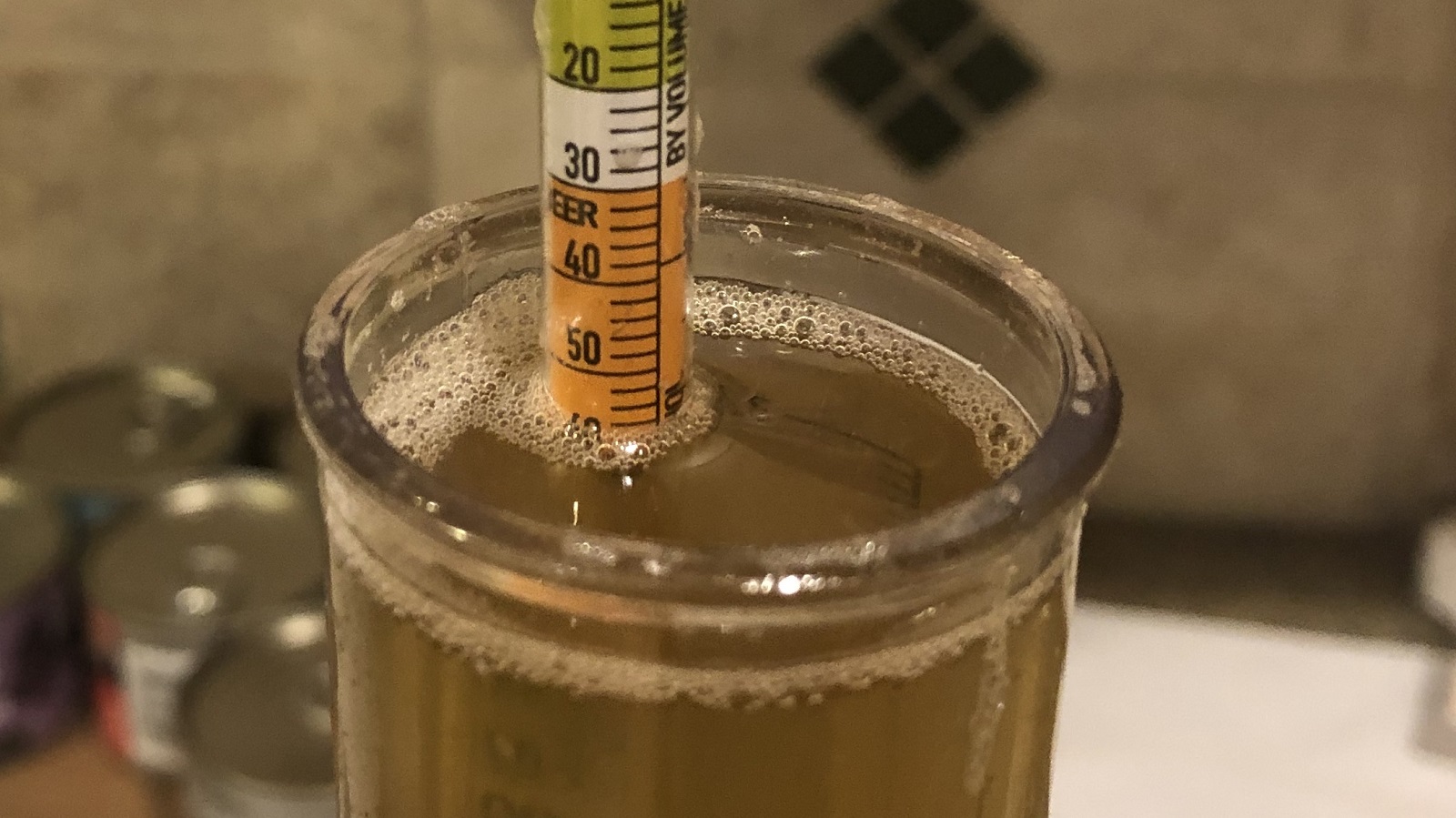
I split the wort evenly between two sanitized Brew Buckets and placed them in my fermentation chamber controlled to 66°F/19°C before pitching a pouch of Imperial Yeast A07 Flagship into each batch.
With signs of fermentation activity absent a few weeks later, I took hydrometer measurements indicating fermentation was complete.
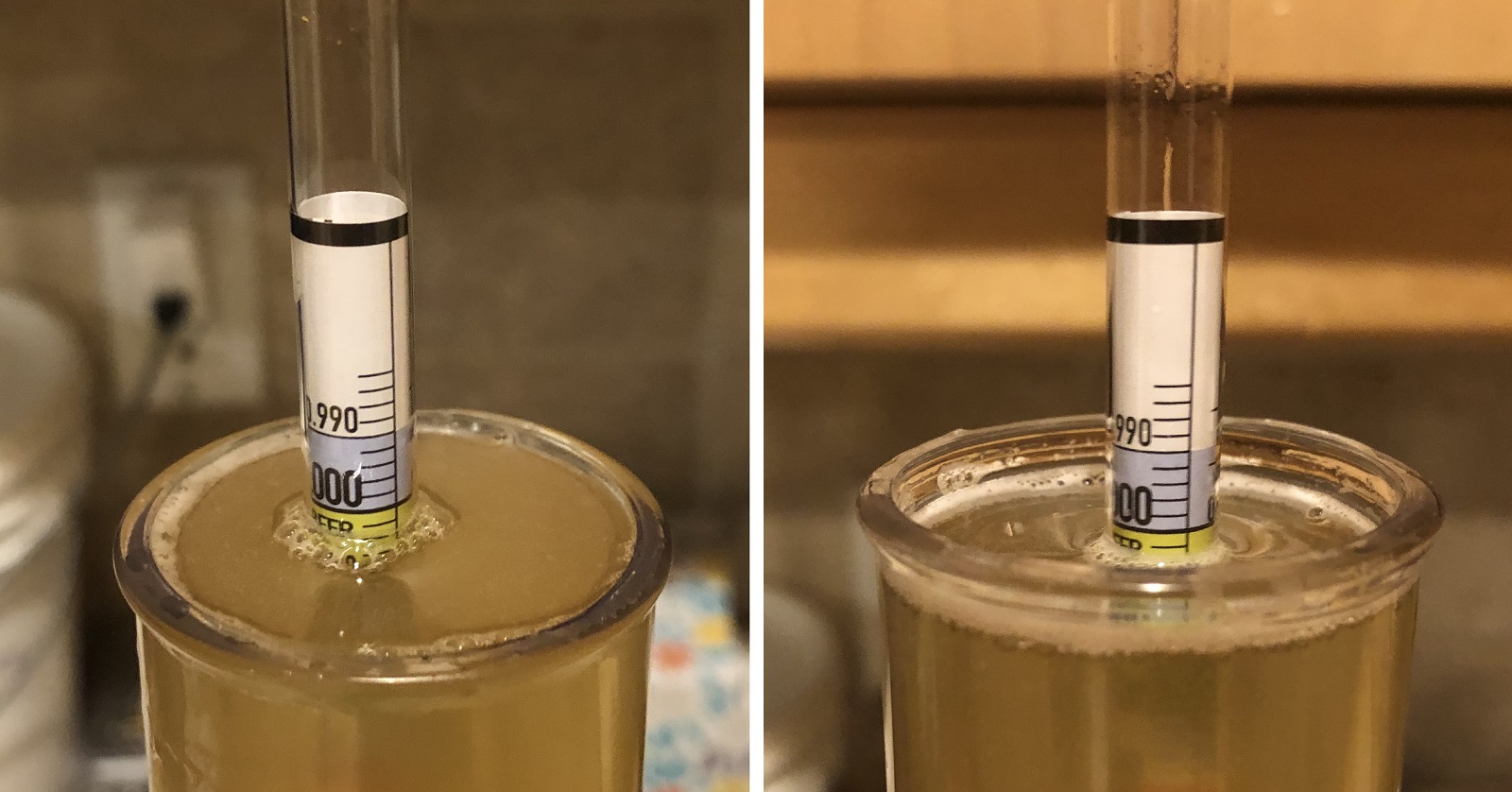
At this point, I prepared 2 kegs for packaging by sanitizing but not purging them as I typically do. Rather, I placed the end of a CO2 hose into the airlock hole of one Brew Bucket and put the end of another CO2 hose into the top of one keg, after which I set the gas to continuously flow at about 2 psi.
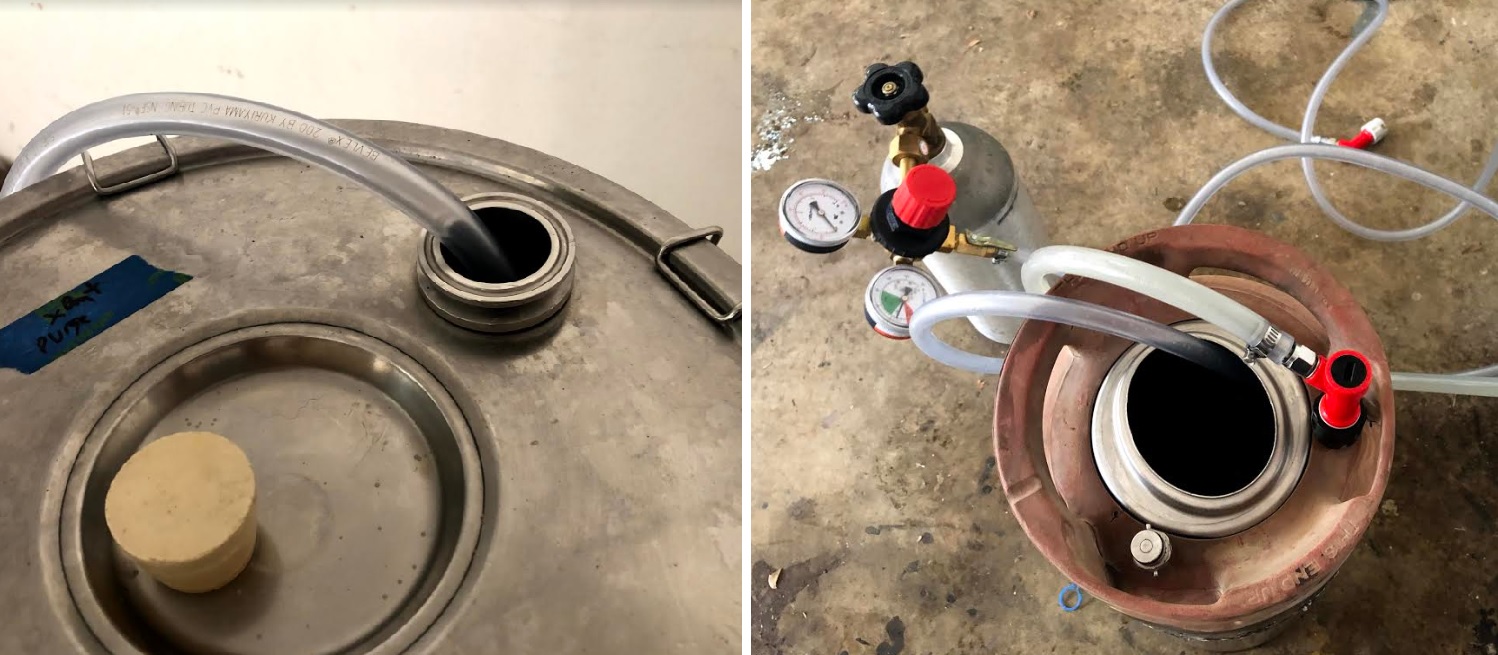
With CO2 continuously purging one fermenter and keg, the beers were packaged at the same time so as to ensure both were exposed to air for a similar amount of time.

The filled kegs were placed in my keezer, burst carbonated, then left to condition for 4 weeks before evaluation.
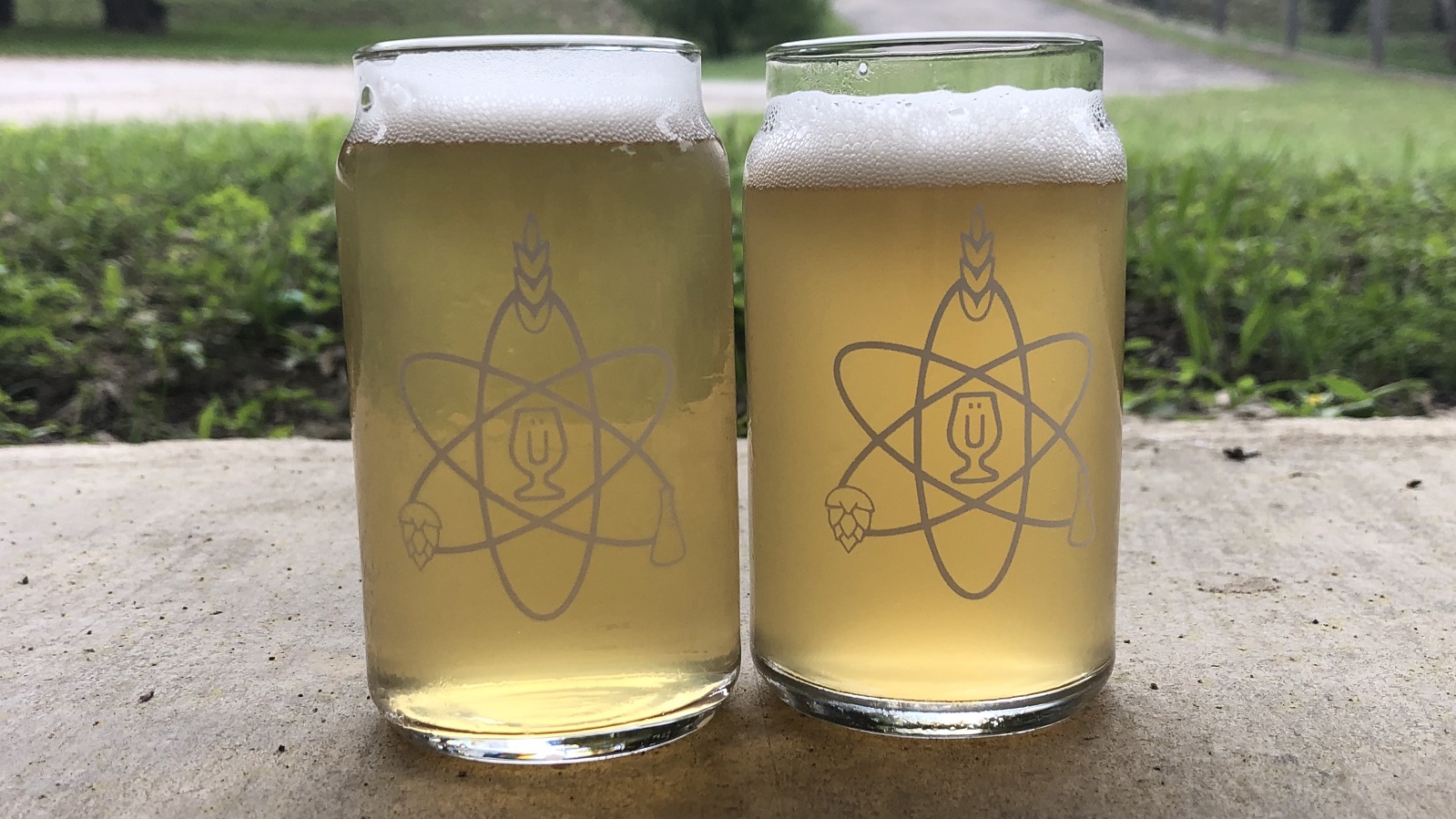
| RESULTS |
Prior to the COVID-19 quarantine, 16 people of varying levels of experience participated in this xBmt during an Austin ZEALOTS club meeting. Each participant was served 1 sample of the beer continuously purged with CO2 at packaging and 2 samples of the non-purged beer in different colored opaque cups then asked to identify the unique sample. While 9 tasters (p<0.05) would have had to accurately identify the unique sample in order to reach statistical significance, 11 (p=0.004) did, indicating participants in this xBmt were able to reliably distinguish an IPA packaged with continuous CO2 purging of the fermenter and keg from a non-purged version of the same beer.
The 11 participants who made the accurate selection on the triangle test were instructed to complete a brief preference survey comparing only the beers that were different. A total of 4 tasters reported preferring the continuously purged beer and 7 said they liked the non-purged beer more.
My Impressions: Out of 6 blind triangle attempts, I picked the odd beer out 3 times, which is only slightly better than random guessing. I am surprised by how similar the beers taste, despite noticing a difference. To me, the consistently purged beer has slightly less body, but still maintains its strong hop aroma, which I enjoy. Both beers are very tasty.
| DISCUSSION |
Oxygen unarguably has a negative impact on beer, and hence it makes sense that brewers would employ methods to reduce this risk as much as possible. While the use of chemical anti-oxidants and closed pressure-transfers has been shown to be quite effective, there are certain scenarios where these options aren’t feasible. An arguably more rudimentary approach involves continuously flowing CO2 into the fermentation vessel and keg during the packaging process, which some claim creates a blanket of gas over the beer that protects it from oxygen exposure. The fact tasters in the xBmt were able to reliably tell apart an IPA packaged under such conditions from one packaged without continuous purging provides some support for this method.
A commonly cited truth when it comes to purging with CO2 is that, despite being heavier than oxygen, the two gases will inevitably mix. During the packaging process, any amount of agitation would presumably cause this mixing to occur and thus expose of the beer to oxygen. Given the results of this xBmt, it’s possible the perceptible differences were a function of the amount of oxygen the beer was exposed to, as the constant flow of CO2 could have reduced overall oxygen ingress. Interestingly, a majority of tasters ended up preferring the beer that was packaged without continuous purging.
Seeing as I ferment in Brew Buckets fitted with pressure transfer kits, I’ll continue to rely on pressure transferring to purged kegs, as it works well and is quite easy. However, based on these findings, I think continuously purging the fermenter and keg while packaging may be a good way to reduce oxygen exposure when using fermentation vessels such as barrels and glass carboys.
If you have any thoughts about this xBmt, please do not hesitate to share in the comments section below!
Support Brülosophy In Style!
All designs are available in various colors and sizes on Amazon!
Follow Brülosophy on:
FACEBOOK | TWITTER | INSTAGRAM
If you enjoy this stuff and feel compelled to support Brulosophy.com, please check out the Support page for details on how you can very easily do so. Thanks!

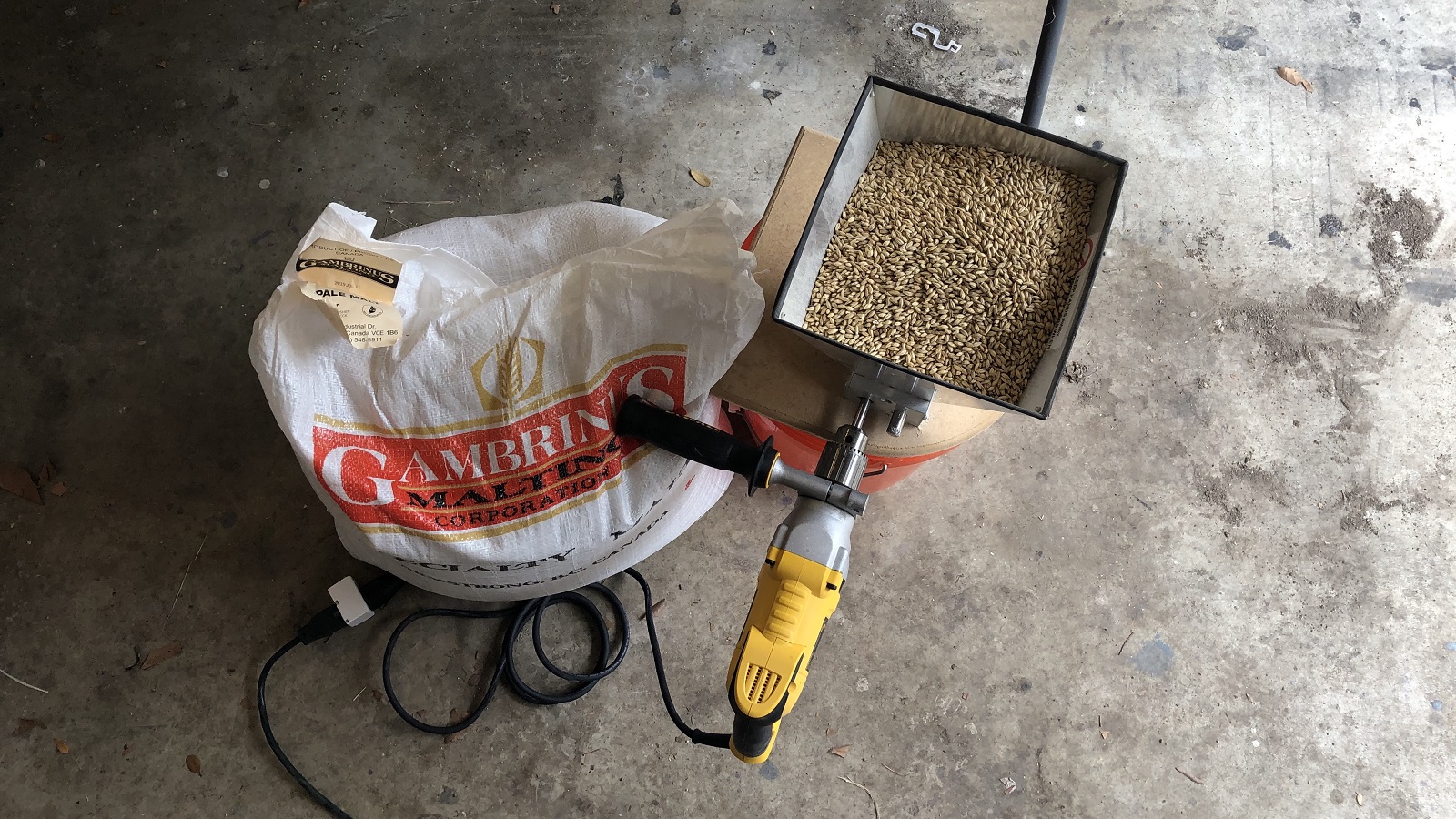
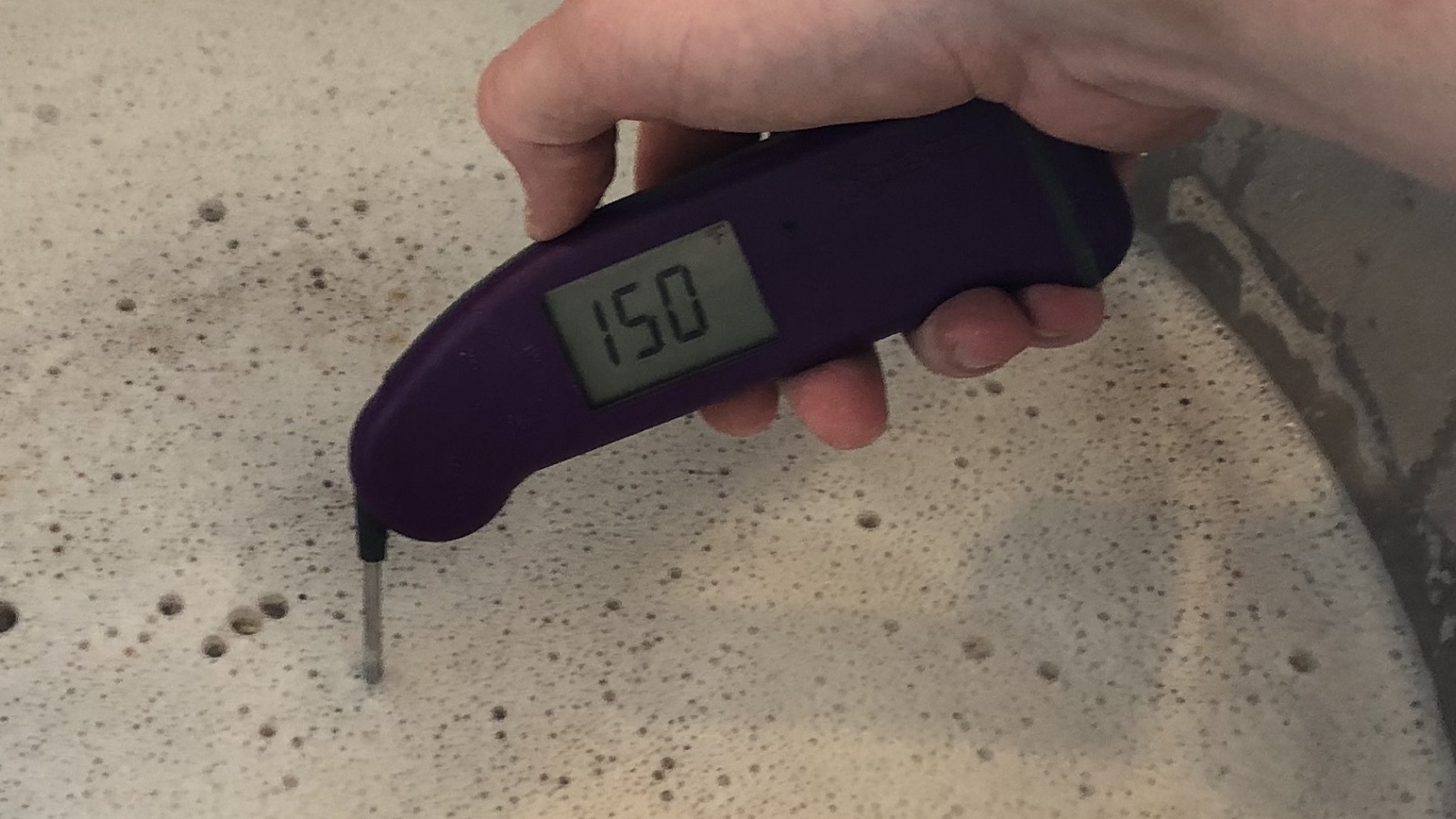
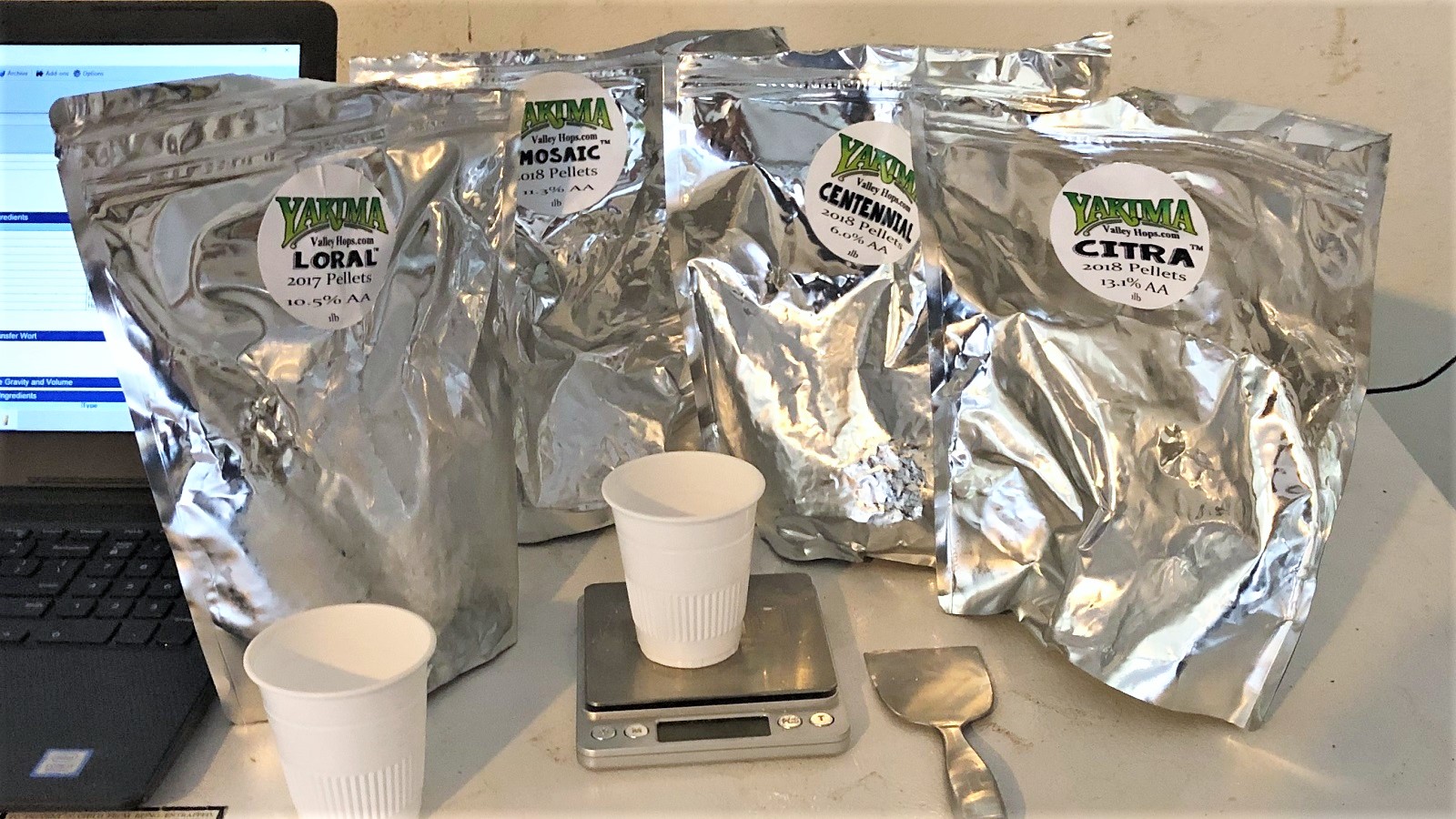
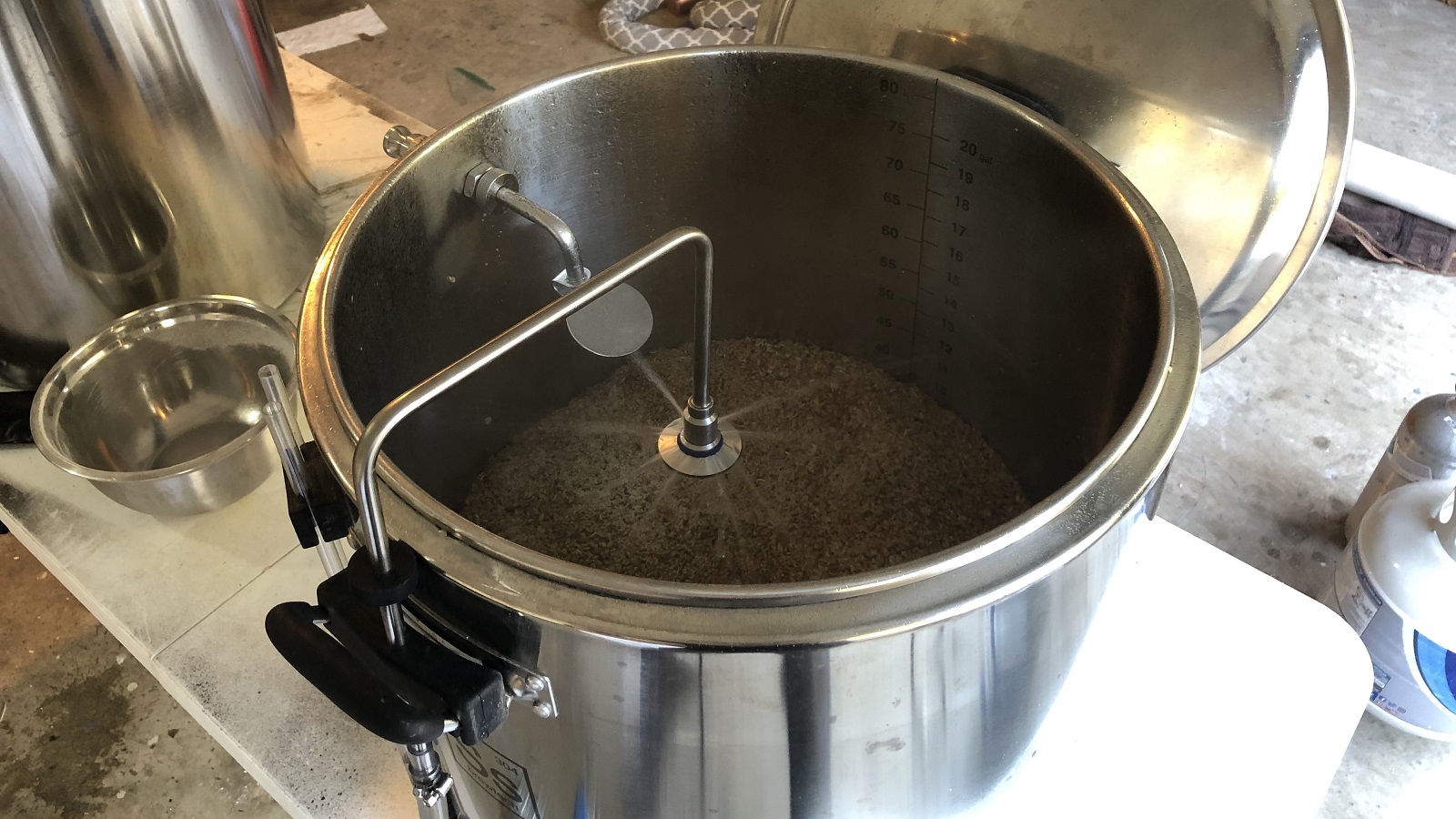
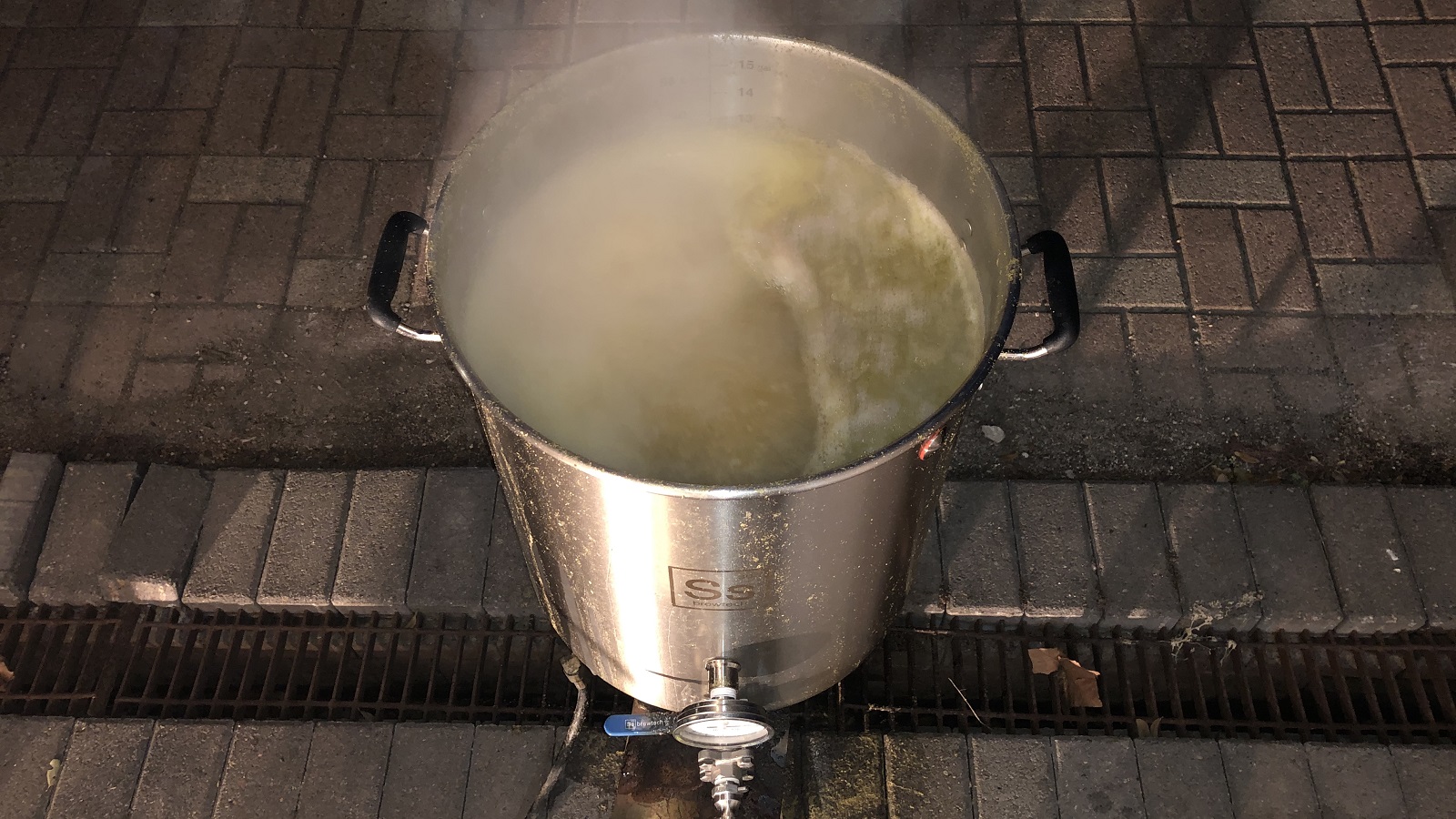
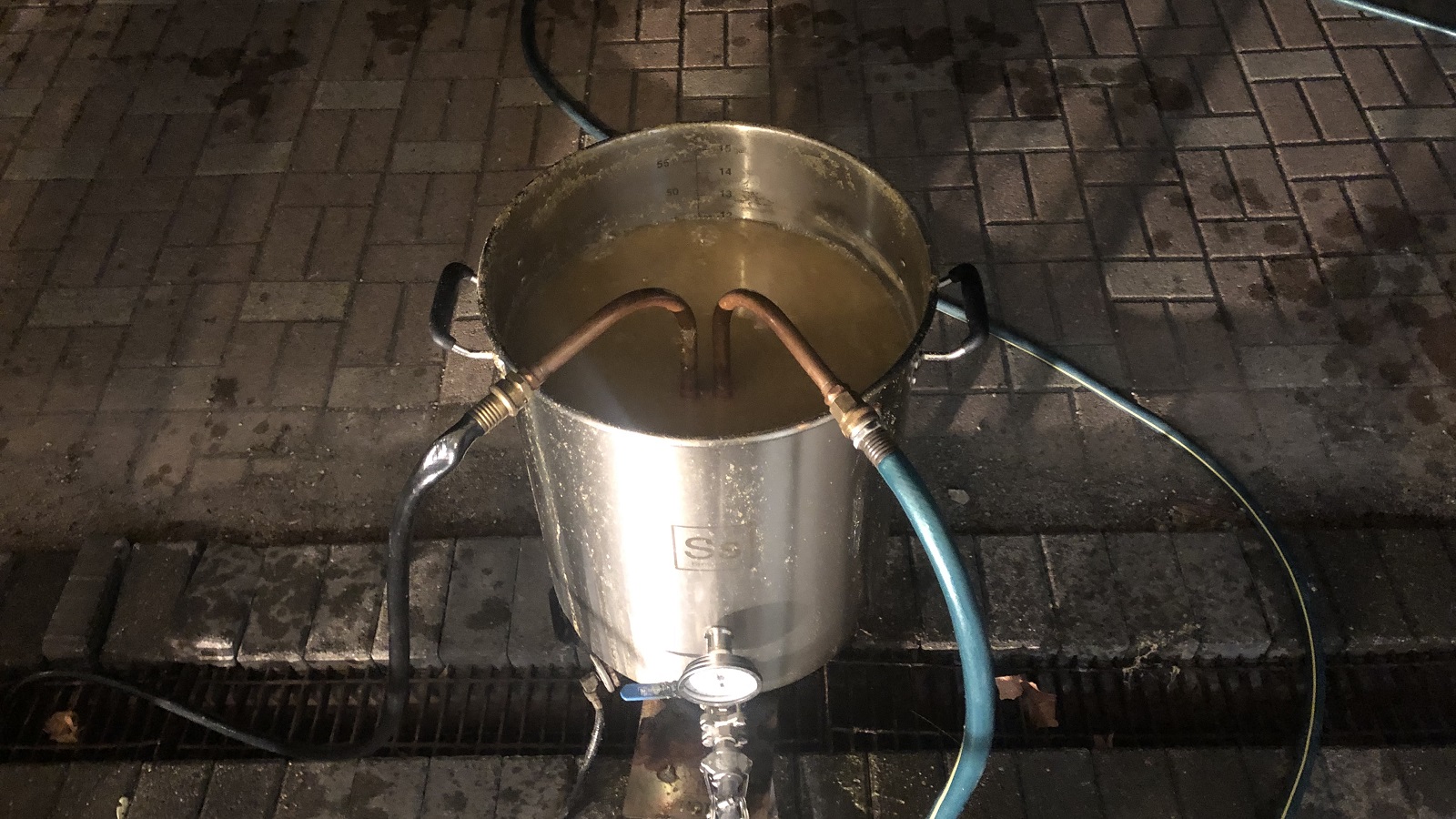
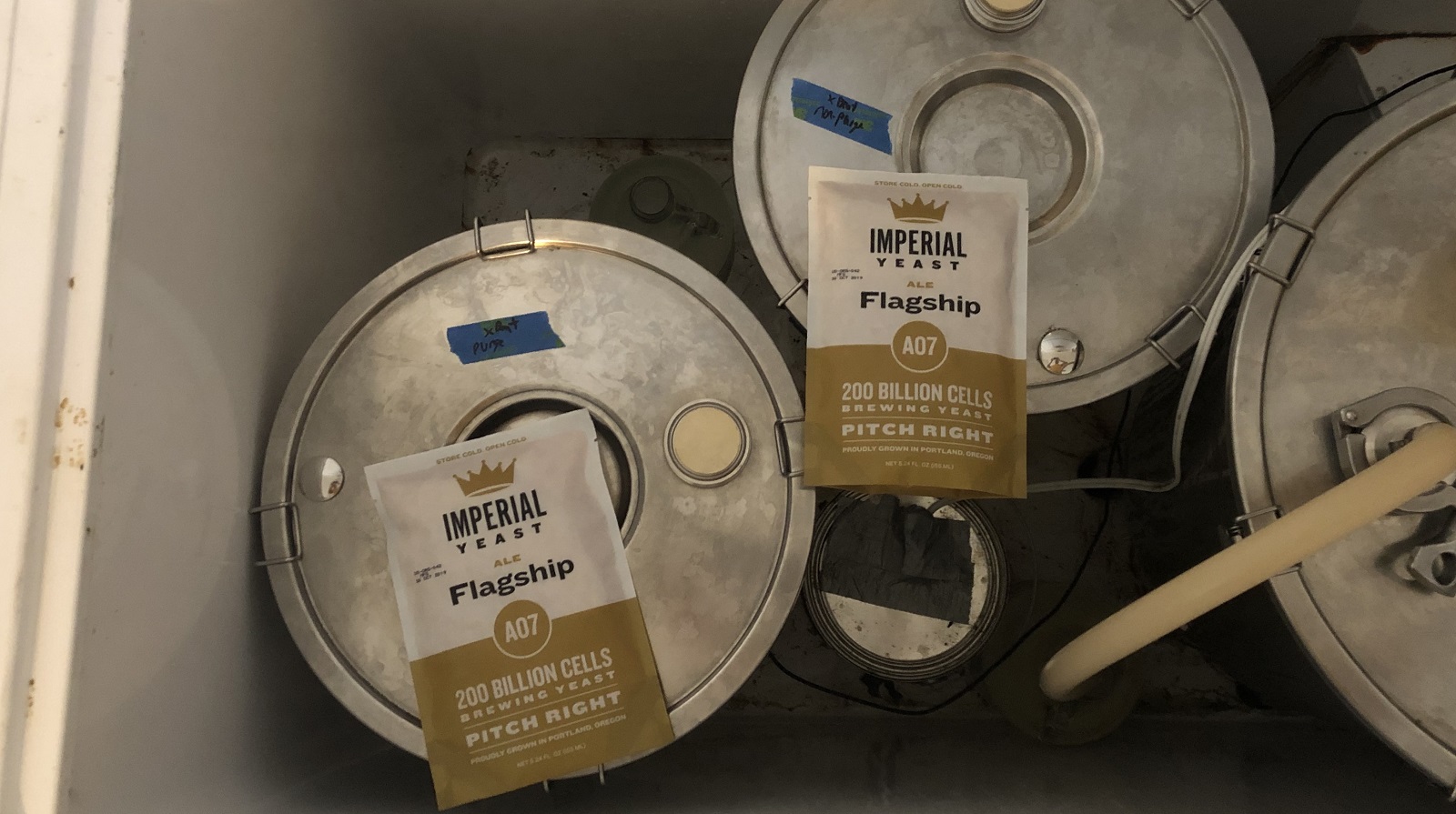










12 thoughts on “exBEERiment | Cold-Side Oxidation: Impact Of Continuously Purging Fermenter And Keg With CO2 At Packaging On American IPA”
5 day boil! That’s intense.
We always gravity drain the fermented beer into a keg that has been purged with CO2. The O2 that was in the keg has has escaped, leaving what is basically an O2 free environment. Never had any issues or problems related to oxygen.
Yep, that’s what I do also, and I connect the gas out on the keg to the blowoff on the fermenter (perhaps you do as well). That way, as the beer flows in the keg, it pushes out the co2 back into the fermenter: a system totally closed off from oxygen and without the need for a pressure transfer.
I do the same thing. Very little, if any, of the ambient atmosphere that gets pulled into the fermenter makes it into the keg, and I suspect there is not enough time for meaningful oxidation at the surface of the liquid beer. I am sure this results in probably a little more residual O2 than might happen otherwise, but speaking anecdotally the kegs still seem to stay fresh longer than when I did totally open transfers.
I do the same as well. If you connect the gas out on the purged keg to the blowoff of the fermenter, then the co2 from the keg goes back into the fermenter as the beer pushes it out, a system totally closed from oxygen without any need for a pressure transfer.
If you plug the gas out from the keg back into the fermenter, it will be completely closed and you don’t have to worry about oxygen at all.
That’s a cool idea! I’ll have to see if I can rig up something along this line…
How was the beer?
High IBU, and the IPA was specifically designed to not go stale. Try a low IBU NEIPA, and enjoy your brown stale sludge.
I thought the same thing – that historically IPA’s were designed to travel long distances.
I pressure transfer almost all of my beers the exception being hefe’s and a few others that I want to keg condition.
Please do this one again with a pils or a cream ale.
Thanks Brülosophy for all you do in exploring the methods and myths of brewing, always a great read and usually something to ponder. It would seem that it would be possible to measure the amount of dissolved oxygen in a liquid but this may well be beyond the scope/expense of these experiments. It would be great to know how much exposure, (time x surface area?) it occurs and how much affects the beer taste and stability. It would also be great if I won the lottery!
I just brew under pressure crash chill then clarify all in the same unit, job done.
Fermentation temp about 24-25C. 7 days for 50ltrs .